Flexible "metal cloth" coating technology is a new surface coating technology developed abroad in the 1980s. It is a combination of powder metallurgy powder, plasticizer and binder powder plasticizing rolling or scraping, powder metallurgy sintering, heterogeneous material connection and other technologies. The main process is: firstly to form the desired powder (including cermet: WC, TiC, TiC, TiCN and other hard phases; bonding metal powder: Fe, Cu, Co, Ni, Ti, etc.) and organic and inorganic molding agents After the binder and plasticizer are mixed, a "metal cloth" having a certain thickness and good flexibility is prepared as needed, and then the "metal cloth" is cut into a desired shape and adhered to the surface of the metal workpiece by appropriate heating. Treatment, obtaining a sintered coating with wear resistance, corrosion resistance, heat resistance or other special properties on the surface of the metal workpiece.
At present, the main heating methods used in domestic "metal cloth" coating research are: laser cladding, vacuum melting, induction cladding, brazing and hot pressing sintering.
1, laser cladding
Laser cladding is an important material surface modification technology. It refers to placing selected coating materials on different surfaces of the substrate surface and using high energy density laser beam to make the coating layer together with the substrate surface. The method of rapid melting, followed by rapid solidification to form a surface coating that has a very low dilution and forms a good metallurgical bond with the substrate. According to different feeding methods, it can be divided into preset laser cladding (as shown in Figure 1) and synchronous laser cladding (as shown in Figure 2). Laser cladding not only meets the specific performance requirements of the material surface, but also saves a lot of precious metals. The utility model has the advantages of small dilution, high precision, good combination of the cladding layer and the matrix, less dense pores of the structure, various materials suitable for cladding, large changes in particle size and content, and the like. The development of laser cladding technology has also shown good application prospects for more than ten years, but there are also constraints in the industrial production promotion that the equipment has high one-time investment, high operating cost and large thickness coating. . In addition, since the laser cladding temperature is too high, the reinforcing particles can be decomposed, thereby reducing the wear resistance of the material.

Figure 1 Schematic diagram of the preset laser cladding method           Figure 2 Schematic diagram of synchronous laser cladding method
2, vacuum melting
Vacuum melting coating technology is a modern surface metallurgy technology. Under certain vacuum conditions, a certain amount of thermal energy is applied to the surface of the coating layer of the base metal to melt the coating material powder and infiltrate the surface of the substrate. The coating and the substrate can be diffused or interfacially reacted, and a mutual dissolution zone is formed at the interface between the coating and the substrate, so that the cladding layer and the substrate can be firmly bonded, and a solid metallurgical bonding layer is formed with the substrate. Thereby forming a sintered coating technology that is resistant to abrasion, corrosion or high temperature.
The research on vacuum melting technology in China originated from the Iron and Steel Research Institute in the 1950s. It used this technology on parts such as pipe machine heads and diesel engine exhaust valves, and achieved good results. Vacuum melting technology has the characteristics of low cost, convenient operation and good process performance. At present, most of the researches on vacuum melting technology in China are in the preparation of, for example, internal combustion engine exhaust valves, turbine engine blades, wire rolls, and roll machine guide plates. It is also wear-resistant, corrosion-resistant, and high-temperature resistant parts, and has achieved good results. The vacuum melted coating has the following advantages: no microcracks and micropores, it is a continuously sealed coating, its rust and corrosion resistance is better than that of the plating layer and the thermal spray coating, the thickness of the coating is wide, vacuum melting The composition of the burned coating is adjustable, the hardness of the coating can be varied within a certain range, and the hardness distribution is uniform. But it also has its own shortcomings that cannot be serviced by itself. Vacuum melting needs to be carried out at a higher temperature and for a certain period of time, with higher energy consumption and poor adhesion of dust-resistant particles.
3. Induction cladding
The induction cladding technology heats the substrate and the coating layer by the eddy current effect generated by the induction coil, so that the coating melts and adheres to the substrate, thereby achieving a cladding technique in which the metal surface is combined with the coating, mainly using a high frequency. The induction heating device performs induction cladding treatment. Induction cladding has the characteristics of high bonding force, short cycle, low cost and convenient operation.
The working principle of the induction heating technology is to place the workpiece in the sympathetic magnetic field generated by the induction coil, and use the principle of electromagnetic induction to generate an induced current inside, and rely on the energy of these eddy currents to achieve the heating purpose. Compared with the traditional heating method, the induction cladding process has the advantages of high heating temperature, high efficiency, fast heating speed, low energy consumption and strong bonding force between the coating and the substrate. Figure 3 is the principle and effect diagram of induction heating.
There are two main methods for pre-preparation of coatings in induction cladding technology: pre-formed powder and pre-formed powder block methods. The preset powder method is further divided into a hot coating method and a cold coating method, that is, the powder is coated on the surface of the sample by thermal spraying and adding a binder to the powder, respectively, and then inductively cladding. The preset powder block method firstly presses the configured alloy powder into a compact powder block by using a hydraulic device, and places it on the surface of the pre-treated base material, and heats the powder block in a short time by using a high-frequency induction heat source. Covered on the substrate, the schematic diagram is shown in Figure 4.

   Figure 3 induction heating principle and effect diagram
    Â

Figure 4 Schematic diagram of high frequency induction cladding powder block
4, brazing
The so-called brazing wear-resistant coating is a coating having a high wear resistance on the surface of the component by means of a brazing method and a hard particle reinforced phase of a certain particle size, and has the following characteristics: the brazing heating temperature is low, The wear-resistant hard phase hardly burns; the brazing has little effect on the properties of the strengthened matrix, the coating has small deformation; the surface is well formed, is not easy to crack, the machining amount is small, the production cycle is short, and the process cost is low; the brazing layer The shape and thickness are easy to control; the wear-resistant hard phase in the brazing coating has a relatively uniform distribution of fine particles, and the brazing filler between the particles is filled with higher strength and toughness, so that the sintered coating has good mechanical properties and wear resistance. . Therefore, it is easy to realize the composite wear-resistant coating on the surface of various metal substrates by using the brazing coating technology, and it is not necessary to prepare the composite material in advance, and the efficiency is high, the heat source requirement is low, and the process is simple. Brazing coatings have the above advantages and have received extensive attention in recent years, but are mainly directed to nickel-based brazing filler metal (or alloy) brazing coatings.
5, hot pressing sintering
Since hot pressing and sintering are carried out at the same time due to heating and pressing, the material is in a thermoplastic state, which is favorable for the contact diffusion of the material particles and the flow mass transfer process, so that the molding pressure is only 1/10 of the cold press forming, and the sintering temperature is lowered. The sintering time is shortened, thereby suppressing the growth of crystal grains, and obtaining a product in which the crystal grains are finer, the density is higher, and the mechanical and electrical properties are more excellent. Ultra-high purity products can be produced without adding sintering aids or molding aids during hot pressing. Hot-press sintering also has disadvantages, mainly due to the complicated sintering process and equipment, strict requirements for production control, high requirements for mold materials, high energy consumption, and low production efficiency, resulting in high production costs.
AGLEX Full Spectrum G series Linear LED Grow Light 110W 220W applied with well-know brand, quality materials, ensuring they are with long lifespan and helping plants growing better and faster.
SUPERIOR CHIP TECHNOLOGY – Samsung LM301B LEDs are apllied to AGLEX G110 G220 Full Spectrum LED Grow Light, more efficient and brighter than ant other grow lights. This results in our Grow Light being 20% more PAR and lumen than standard LED Indoor Grow Light.
HIGHER YIELD - NEWEST Samsung LED technology and RELIABLE UL driver used, 2.8μmol/J, increase your yield 50% compared with other brand grow lights, 220W uniform PAR value at average 673umol at 18''height.
ENERGY EFFICIENT - Low power consumption but decent light output. Pay less bills. It saves up to 70% energy than other led Plant Grow Lights.
REFLECTOR AND FANLESS DESIGN - G110 G220 LED Grow Lamp is designed with reflector, contributing to high intensity light and excellent performance. All casing is heat sink and fanless design will make your growing life easy and quiet. NO ANY NOISE. Suitable for indoor plants growing.
WIDELY USED - Our full spectrum sunlike LED Grow Light is perfect to use for all stages of plant growth, from raising plants from clone to budding without swapping lights. Whether you're growing tomatoes, vegetable, strawberry, pepper, microgreen or herb, AGLEX Grow Light covers you all stage growing needs and helps you get high yields. Perfect for your own indoor live plant gardening, shelves and tent growing.

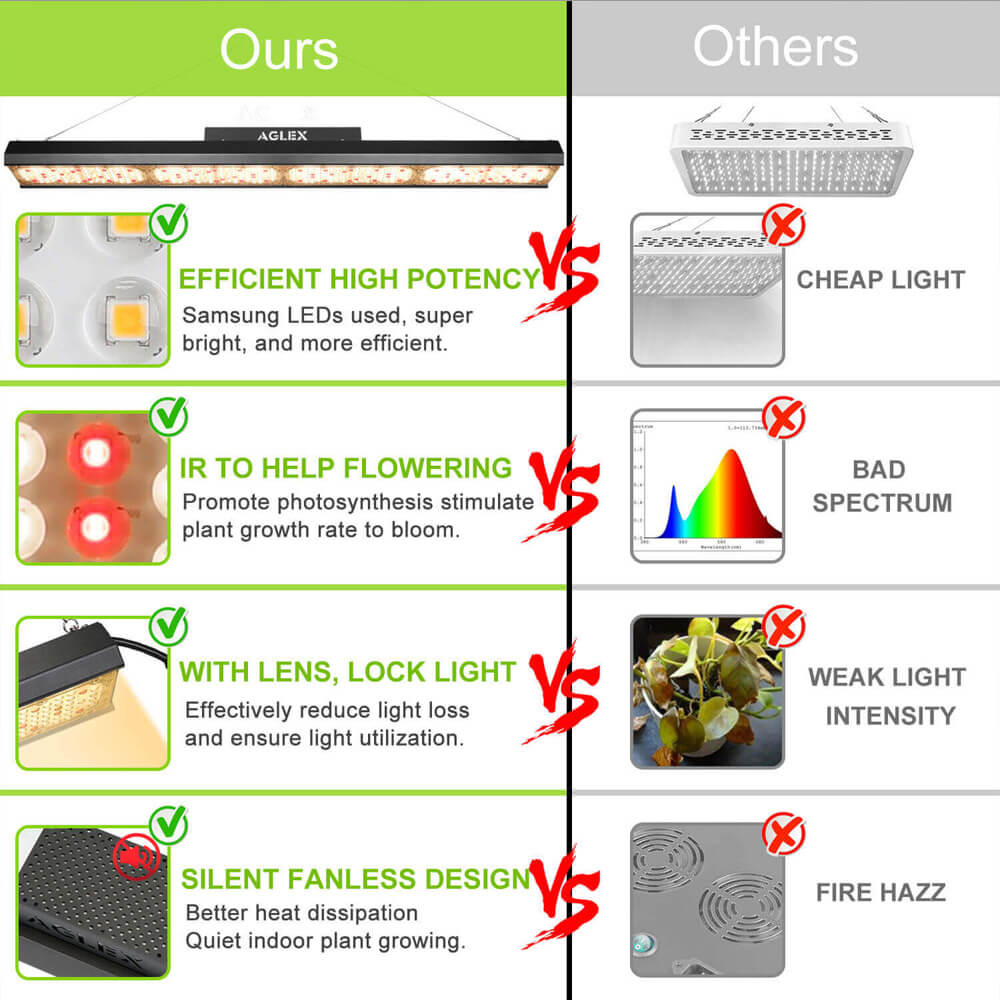

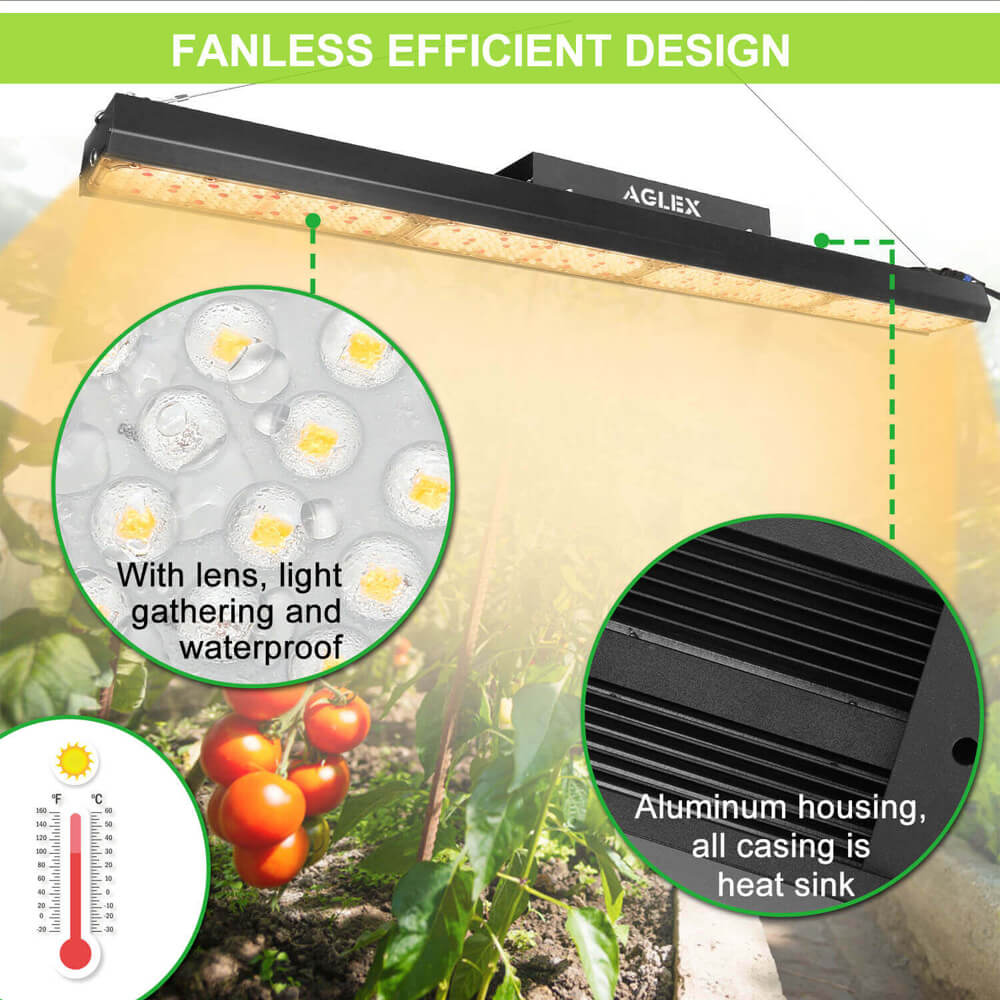
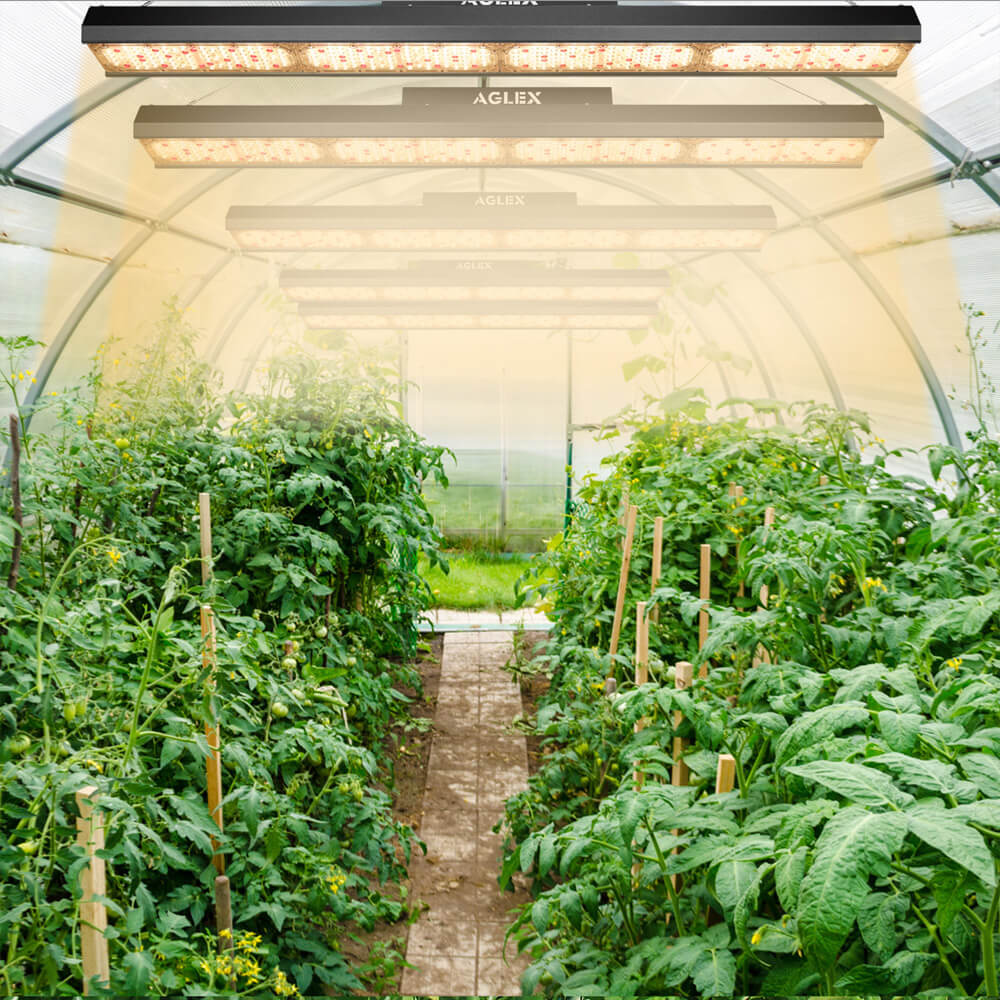
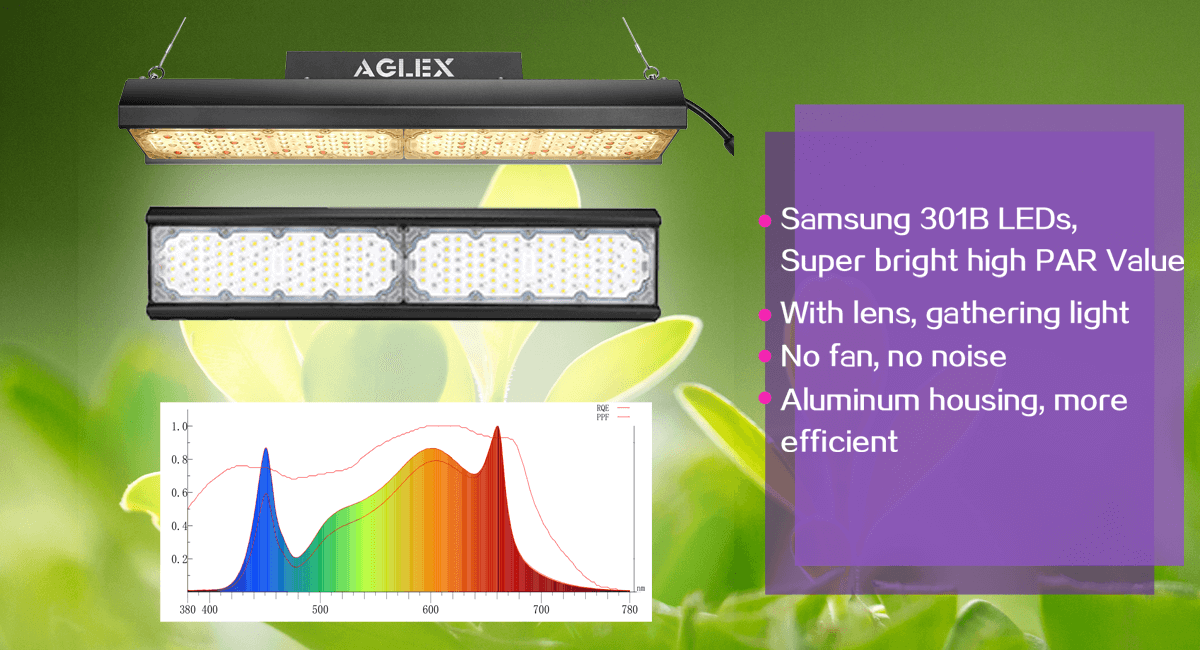
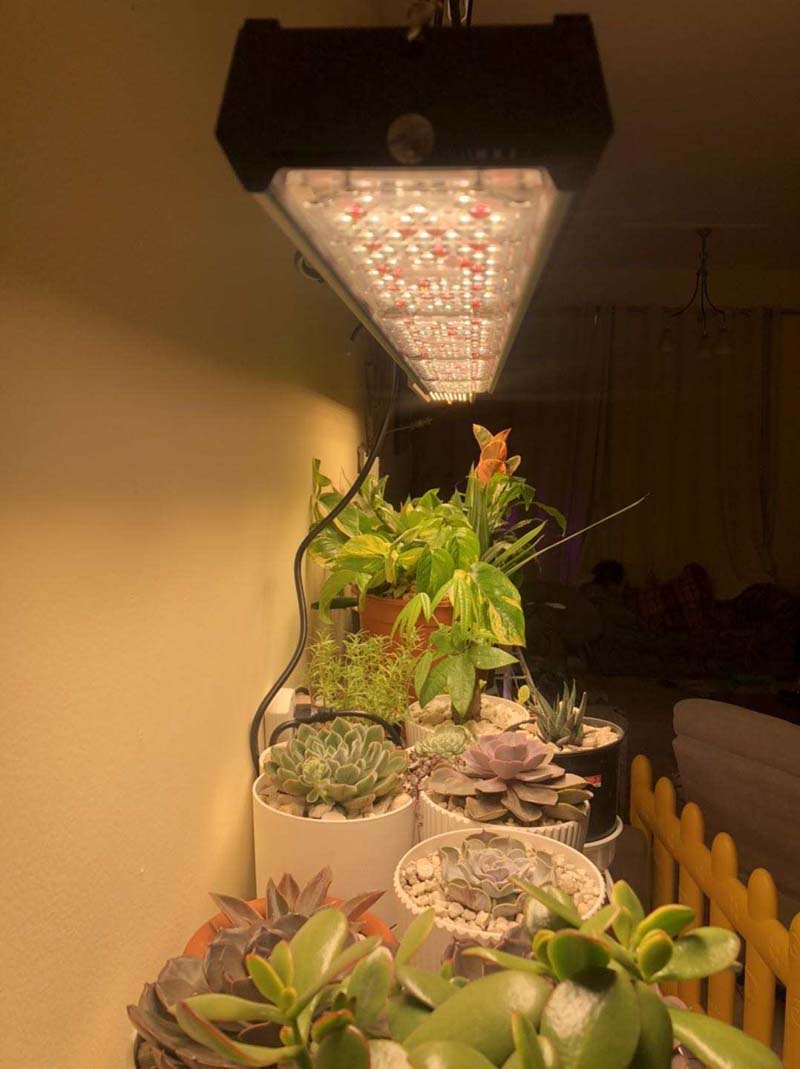

Application:
Suit for tomatoes, vegetable, strawberry, pepper, microgreen and herbal plants etc. And suit for all the growing stage.
For grow tent, greenhouse, vertical farming, commercial led grow lighting etc.
Linear Led Grow Light
Linear LED Grow Light, LED Grow Light 100w, LED Grow Light 200W, LED Grow Light for 2x4ft
Shenzhen Ameri Technology Co., Ltd. , https://www.aglexz.com